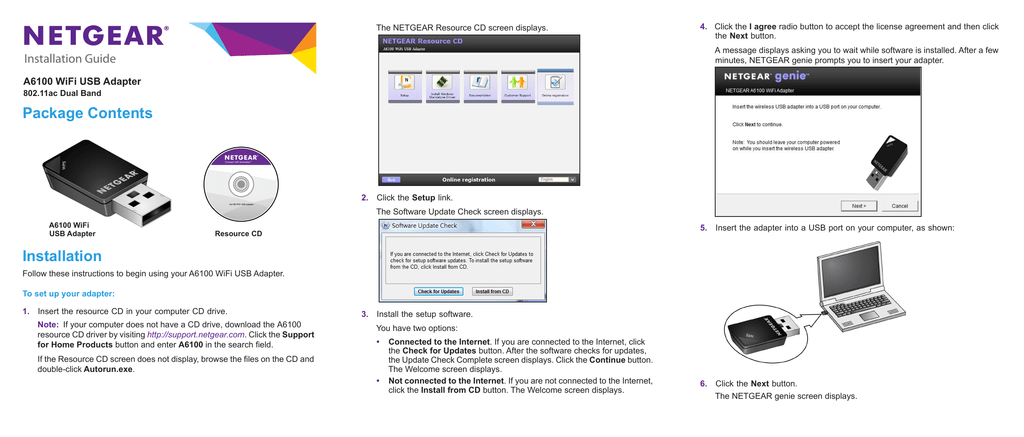

- #Netgear n150 wireless usb adapter tutorial free
- #Netgear n150 wireless usb adapter tutorial windows
Heiyo mini wireless wi-fi adapter, a new experience of enjoying 5.8GHz+2.4GHz dual band with OFDM wireless technology, it presents less signal interference while works at a 5.85.8GHz frequency, and providing better transmission with its 433Mbps data rate, the unique design brings easy and free wireless digital life.

With the NETGEAR Push 'N' Connect feature, enjoy a secured wireless Internet connection, at the push of a button.ģ: Heiyo Dual Band Wireless Adapter,600Mbps 802.11ac Mini USB NETGEAR genie® is included for easy installation. The NETGEAR A6100 Wi-Fi USB Mini Adapter with AC600 Dual Band wirelessly connects your notebook or desktop computer to an 11ac network for applications such as lag-free, HD streams throughout your home, online gaming and a secure and reliable connection to the Internet. In some places, this costs almost 80 bucks. This miniature adapter is designed to be as convenient and unobtrusive as possible, while also including attractive features such as advanced wireless encryption, easy installation, and Soft AP Mode.Ģ: Netgear A6100-100PAS IEEE 802.11ac - Wi-Fi Adapter

TP-LINK's AC450 Wireless Nano USB Adapter, the Archer T1U allows you to connect a desktop or laptop computer to a wireless network and achieve speeds of up to 433Mbps. Links and pictures open in a new tab so you can click at will, check out the details, close and return.ġ: TP-Link Archer T1U Wireless Nano USB Adapter
#Netgear n150 wireless usb adapter tutorial windows
As mentioned, there are hundreds of vendors and tens of thousands of choices, but these are available now, work with Windows 7-10 (sometimes XP) and top rated. Now you should have an idea of what adapter will work for your situation, so let's begin looking at some excellent choices. Most of them are plug-and-play with the push of a button. In my opinion, for the most part, if your range is this bad you might consider purchasing what is called a Wi-Fi extender or repeater for a better signal. The idea behind antennas is that you get better range. They have antennas that either fold out or are screwed into the end of your adapter by hand. They are much larger than mini or micro, but may sometimes offer a slightly better range with larger built-in antennas.ģ: Antenna Wi-Fi Adapters Best for desktops. These are usually rectangular and can be roughly two inches long (give or take) and are thin. Don't let the small size fool you there are some excellent choices here in price, quality and performance.Ģ: Standard USB Wi-Fi Adapter Best for desktops first, then laptops if you don't mind that they stick out a little. These USB adapters are so small you barely notice them. They are:ġ: Mini or Micro Best for laptops, but they also work fine with desktops. There are essentially three different sizes, so, for the most part, I am making up names for them. The next thing you want to know is what "size" adapter you will need so let's get that out of the way. If money needs to be saved, then get a lesser known brand, but if support and reliability are a concern, then you're probably going to pay a little more for names like Linksys, D-Link, or Netgear, for example. Some lesser known brands can be both a best seller and well reviewed online, but they may lack support and reliability. Check the back or bottom of your router for a sticker that tells you the brand and model. You can Google your router name to find out quickly. However, if your router is 802.11ac, USB 3.0 is the correct choice to take advantage or the higher speed considering that standard is theoretically faster than USB 2.0, which would cause a bottleneck. If your router is 802.11 A-N, you can base your USB 2.0 or 3.0 choice on price or features. Check your router specs there are many IEEE Wi-Fi standards with the latest common release being 802.11ac. If your computer is 2008-09 or older, you might not have USB 3.0 so buying a 3.0 adapter would be pointless, although they are backward compatible. Most commonly found today is USB 2.x and 3.x. TIP: Hard to fix Windows Problems? Repair/Restore Missing Windows OS Files Damaged by Malware with a few clicks


 0 kommentar(er)
0 kommentar(er)
